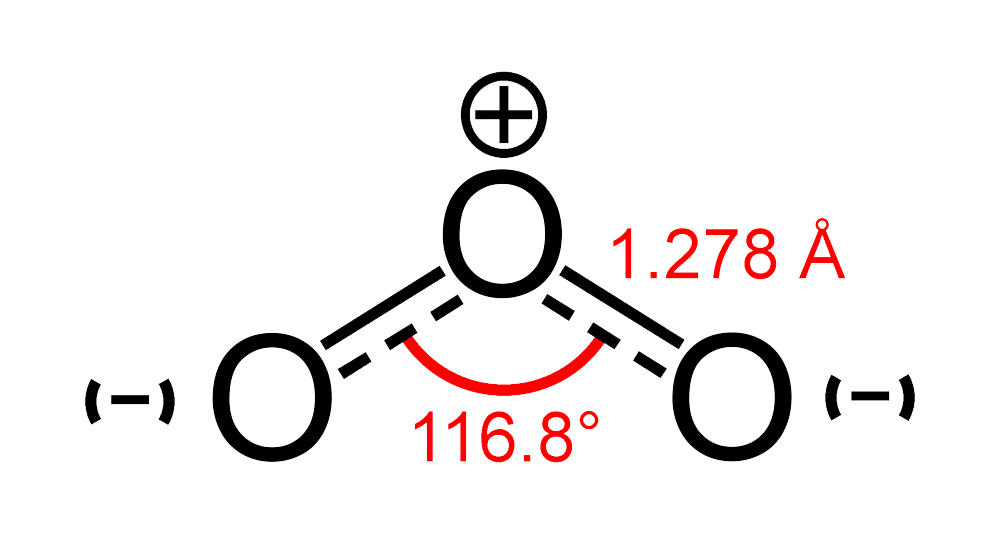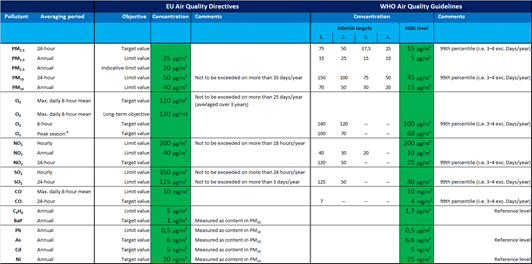
Clean room technology and indoor aerosol
13 December 2022
Clean Room Technology
The clean room technology developed from the 1950s to the 1960s is a comprehensive technology to clean the air of indoor aerosol pollutants and gradually formed to cater to the development of modern electronics, aerospace, and precision machinery. Later, it was found that other modern industries, pharmaceuticals, and hospitals that treat leukaemia, burns, or perform major operations all have high requirements for the cleanliness of the indoor environment. At present, it can be said that the level of air cleanliness and air purification technology has directly affected the improvement and development of modern science and technology.
Air cleanliness, as far as its basic control objects are concerned, can also be called aerosol science. It is this particulate matter that becomes an aerosol that the clean room needs to control.
Around the same time as the development of clean room technology, the contamination of indoor air was discovered. Indoor air pollution is due to the extensive use of air conditioners and the airtightness of modern buildings is getting better and better. Closed environments with poor air circulation create a variety of indoor air pollution problems.
Some people classify indoor air pollution into four kinds of pollution, namely: physical pollution, chemical pollution, biological pollution and radioactive pollution. Later, it was discovered that aerosol pollution presents the above four types of pollution.
Aerosols are granular, and its size determines that it can enter our respiratory system with the airflow, and the fine particles in it may also enter the human circulatory system and affect human health. Aerosol will become the carrier of many chemical pollutants, metal elements and their compounds and radioactive substances, sulfates, nitrates, silicates and many complex organic compounds will cause damage to the human body through aerosol carriers. It must be pointed out that various pathogenic microorganisms (bacteria, viruses and fungi) also exist in the form of aerosols in the indoor air and pose a threat to human health.
Aerosol has become the most important pollutant in indoor air, and controlling aerosol pollution in indoor air has become the primary issue of indoor air purification.
In 1975, the European Union adopted its first regulation on air pollution prevention and control – gasoline sulfur content directive. It was not until the mid-1980s that the European Union gradually strengthened air pollution legislation due to the aggravation of European air pollution, acid rain, ozone layer depletion, and global warming. The EU has passed nearly 20 regulations and directives on gas and dust emissions, nine conventions, decisions and directives on the protection of the ozone layer, and formulated a number of regulations on the cooperation of member states in air pollution prevention and control, forming a fairly complete system. legal system . Different experts describe particles in terms of shape, size and chemical composition. Toxicologists refer to aerosols as ultrafine, fine, or coarse substances. Regulators, as well as meteorologists, often call them particulate matter —PM2.5 or PM 10, depending on their size. In some engineering fields, they are called nanoparticles. The media often uses everyday terms that imply the source of aerosols, such as smoke, ash, and soot.
Climatologists typically use another set of labels related to chemical composition. The main aerosol groups include sulfates, organic carbon, black carbon, nitrates, mineral dust and sea salt. In practice, many of these terms are imperfect because aerosols often aggregate together to form complex mixtures. For example, it is common for black carbon particles in soot or smoke to mix with nitrates and sulfates, or to coat dust surfaces, creating mixed particles. Most aerosols – about 90% by mass – are of natural origin. Volcanoes, for example, spew huge plumes of ash into the air along with sulfur dioxide and other gases, producing sulfates. Forest fires send some of the burned organic carbon aloft. Gases produced by certain plants react with other substances in the air to produce aerosols, such as the “smog” of the Great Smoky Mountains in the United States. Likewise, in the ocean, certain types of microalgae produce a sulfurous acid gas called dimethyl sulfide , which can be converted to sulfate in the atmosphere. Sea salt and dust are two of the most abundant aerosols, as dust storms blow small pieces of mineral dust from deserts into the atmosphere, and wind-driven spray from ocean waves throws sea salt high into the air. Both tend to be particles that are larger than man-made particles. The remaining 10 percent of aerosols are considered anthropogenic, or anthropogenic, and come from a variety of sources. Although not as abundant as natural forms, anthropogenic aerosols can dominate the air downwind of cities and industrial areas. Combustion of fossil fuels produces large amounts of sulfur dioxide, which reacts with water vapor and other gases in the atmosphere to produce sulfate aerosols. Biomass burning, a common method for clearing land and consuming farm waste, produces smog composed mainly of organic and black carbon . Automobiles, incinerators, smelters and power plants are prolific producers of sulfates, nitrates, black carbon and other particulates. Deforestation, overgrazing, drought and over-irrigation alter the surface and increase the rate at which dust aerosols enter the atmosphere. Even indoors, cigarettes, stoves, fireplaces, and candles are sources of aerosols.
It’s time to get back to taking aerosol pollution seriously. The World Health Organization has not given data on the relationship between formaldehyde in the air and urban mortality, but the World Health Organization has deduced the relationship between particulate matter and ozone concentrations monitored in ambient air and specific health outcomes (usually mortality) quantitative relationship. These quantitative relationships are valuable for use in health impact assessments to understand the burden of mortality and morbidity at current air pollution levels, and to predict the degree of health improvement that would be achieved under different air pollution reduction scenarios.
The user share of air purifier products that can effectively solve indoor aerosol pollution is far lower than that of air conditioners, range hoods, humidifiers, refrigerators and other household appliances, which is far behind the share of developed countries. Especially in the past few years when the new crown epidemic has been raging, air disinfectors that can effectively control indoor virus aerosol-infected diseases have not been reasonably promoted and used.
From the perspective of governance, air pollutants can be broadly divided into two categories, namely aerosols and gaseous pollutants. The dividing line between the two is the diameter of the particle. Those greater than or equal to 0.01 microns are called aerosols, and those less than 0.01 microns are collectively called gaseous pollutants. The removal of aerosols is called dust removal, and the removal of gaseous pollutants is called gas purification. In industry, classic high-efficiency dust removal technologies include filtration, electrostatic dust removal and Venturi; classic gas purification technologies include adsorption, absorption, combustion, catalysis, condensation, membrane separation, and biological trickling filtration . In general, gas purification is more difficult and costly than dust removal. Whether it is dust removal or gas purification, modern purification technology is sufficient to control these pollutants below reasonable standards.
A history of the development of clean room technology can be said to be the history of the development of filtration technology. The clean room theory holds that aerosols can be controlled as long as filters are used. Now it can effectively control the aerosol of 0.1 micron, and it can control the aerosol of smaller size in the future. The gravimetric efficiency of controlling aerosol has approached 100%. The advantages of filters are self-evident.
American professional research institutions have cleverly combined electrostatic technology and filtration technology. On the premise of ensuring the control of aerosol particle diameter and efficiency, it not only reduces the resistance of the filtration system, reduces power consumption, but also greatly improves the capacity. amount of dust.
The two methods of fiber filtration and electrostatic dust removal are typical dust removal methods, which are almost powerless for gaseous pollutants. Therefore, including the clean room, it is impossible to remove the gaseous pollutants in the clean room only by relying on high-efficiency filtration technology. Clean rooms and all other indoor environments or local environments must have components to control gaseous pollutants in addition to the use of high-efficiency filtration or electrostatic precipitation technology to control aerosol pollution.
In indoor air, aerosols are the most important pollutants that affect health and life expectancy. The concentration of aerosols in the air determines the quality of the air to a certain extent. The EU’s air quality directives (2008/50/EC Directive on Ambient Air Quality and Cleaner Air for Europe and 2004/107/EC Directive on heavy metals and polycyclic aromatic hydrocarbons in ambient air) set pollutant concentrations thresholds that shall not be exceeded in a given period of time. In case of exceedances, authorities must develop and implement air quality management plans. These plans should aim to bring concentrations of air pollutants to levels below the limit and target values.
Selected EU standards and the World Health Organization (WHO) guidelines are summarised in the table below. These apply over differing periods of time because the observed health impacts associated with the various pollutants occur over different exposure times.
The WHO guideline values are set for the protection of health, and are generally stricter than the comparable politically agreed EU standards.

Source: EU Air Quality Directives (2008/50/EC, 2004/107/EC), WHO, 2006, Air quality guidelines: Global update 2005.
The evidence for the impact of aerosols on public health is consistent in both developed and developing countries, that is, the current levels of aerosol exposure to urban populations will have harmful effects on health. The health effects of aerosols are multifaceted, but mainly affect the respiratory and cardiovascular systems; all populations can be affected by aerosols, and their susceptibility varies depending on health status or age. As the level of aerosol exposure increases, so does the risk of various health effects, but little evidence provides a threshold for aerosols below which exposure does not produce expected health hazard effects. In fact, although exposure to particulate matter in the low concentration range will produce health hazard effects, its concentration value is not significantly higher than the environmental background value. For example, in the United States and Western European countries, the concentration of fine particulate matter (particulate matter with a particle size of less than 2.5 μm, PM 2.5 ) that produces health hazards is estimated to be only 3–5 μg/m 3 higher than the environmental background . Epidemiological studies have shown that short-term or long-term exposure to aerosols can have adverse health effects on humans.
The choice of indicative aerosol is also a consideration. At present, the data of most conventional air quality monitoring systems are based on the monitoring of PM 10 , and aerosols of other particle sizes are not monitored. PM 10 represents aerosols that can enter the human respiratory tract, including two particle sizes, namely particulate matter (with a particle size between 2.5 and 10 μm) and fine particulate matter (with a particle size of less than 2.5 μm, PM 2.5), which are considered to be closely related to urban related to the population health effects observed in The former mainly arises from mechanical processes such as construction activities, road dust and wind; while the latter mainly arises from fuel combustion.
In most urban environments, coarse particulate matter and fine particulate matter coexist, but the proportions of these two types of particulate matter vary significantly among cities in the world due to local geographical conditions, meteorological factors, and the presence of special particulate matter pollution sources. Combustion of wood and other biomass fuels can be an important source of particulate matter, mainly fine particulate matter (PM 2.5 ), in some regions. Although few comparative epidemiological studies have been conducted on the relative toxicity of fossil fuel and biomass fuel combustion products, the health effects have been found to be similar in many cities in developing and developed countries. Therefore, it is reasonable to assume that the health effects of PM 2.5 from two different sources are roughly the same.
For the same reason, the WHO air quality guidelines for particulate matter can also be used in indoor environments. A large number of people are exposed to high-concentration indoor aerosols. Indoor aerosols mainly come from the intrusion of air pollutants and smoking, cooking and burning.
Latest News

Rising Heatwaves, Rising Pollution: Why Your Air Matters More Than Ever
As rising heatwaves sweep across the globe with increasing frequency, as we are currently experiencing in the UK,…
Healthy Air Technology launches HA200 Fresh: A powerful, wall-mounted air purifier for homes and businesses
Healthy Air Technology is proud to announce the launch of the HA200 Fresh, a sleek and powerful wall-mounted…

Integrating Air Purification with HVAC: A Vital Step Towards Net-Zero and Healthier Building
Since the launch of the pilot Standard at the end of 2024, all eyes are on trying to…

